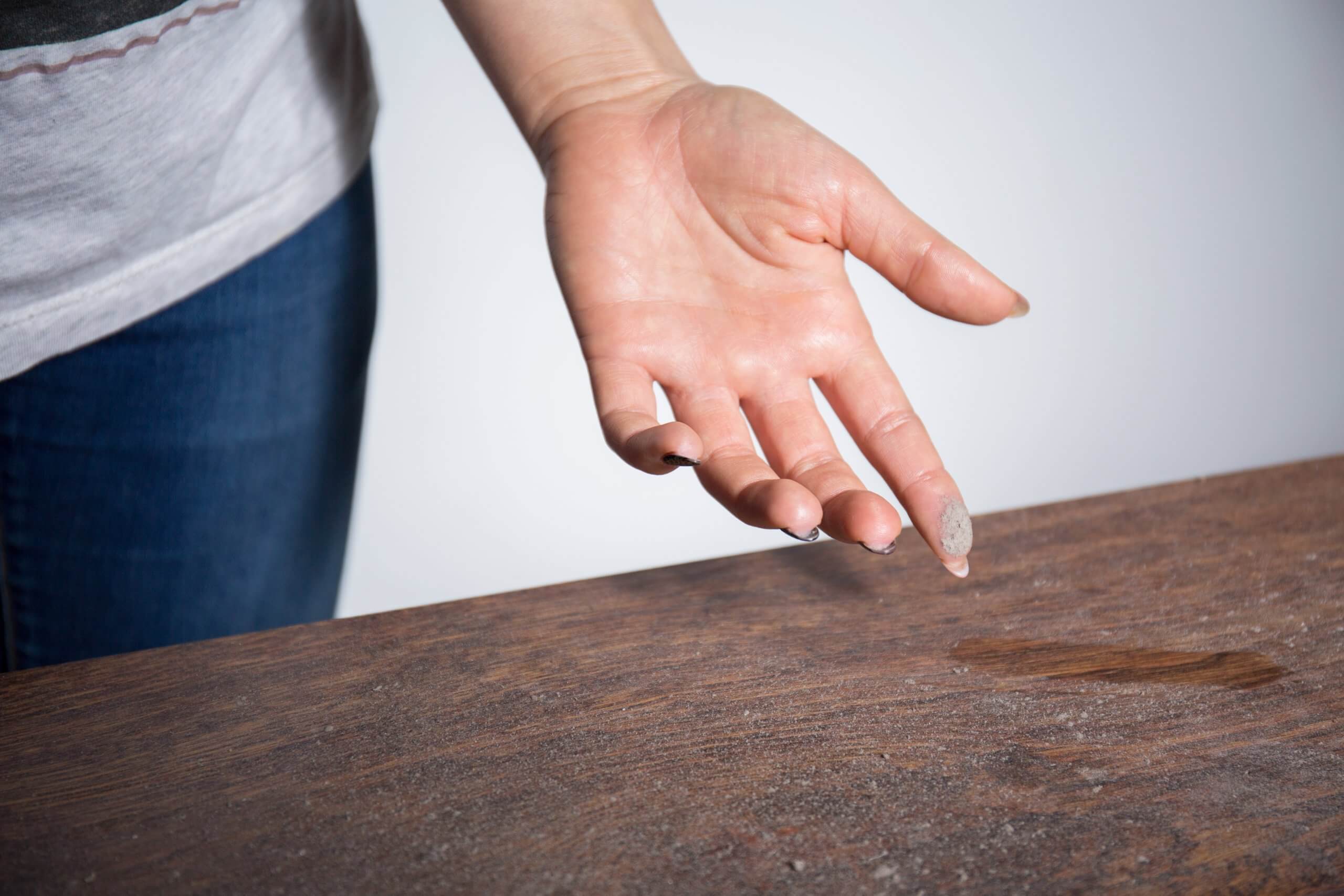Dust is a combination of skin cells, pollen, dead bugs, bacteria, soil, dander, and various fibers. Dust mites are microscopic organisms that feed on dust. We don’t like thinking about the pests and organisms creeping around our living spaces, but it’s essential for IAQ.
Both dust and dust mites can affect the health of your household. Symptoms include sneezing, watery eyes, runny nose, cough, and congestion. In order to better fight dust and dust mites, your home’s indoor humidity level must be just right.
Does Humidity Reduce Dust?
The answer to this question is yes and no. Technically, humidity does not reduce the literal amount of dust in your home. Instead, humidity causes dust particles to adhere to one another, making them too heavy to travel through the air.
Thus, dust particles are still present in your home, but the ideal humidity level makes dust particles quicker to settle and easier to clean.
How Humidity Affects Dust in Your Home
While increasing the humidity level does not reduce the amount of dust in your home, it impacts the way dust particles behave in the air.
At ideal humidity levels, dust particles tend to stick together, becoming too large and heavy to float around. This results in the dust settling onto surfaces, making them quicker to clean.
On the other hand, low humidity levels cause the air to dry out, making it easier for the dust to become airborne and circulate within the house.
This could result in a more substantial buildup of dust and allergens in the air, leading to various health concerns, particularly for those with allergies and respiratory problems.
Does Humidity Control Help With Dust Mites?
When the indoor humidity level is between 40 and 60%, dust mites are unable to thrive and spread. This is because dust mites prefer highly humid atmospheres.
Why? Dust mites absorb moisture from the air in order to survive. If the atmosphere is dry, dust mites are unable to absorb the moisture necessary to survive. This is the equivalent of dogs drinking water to avoid dehydration.
Ideal Humidity Levels for Dust Reduction
If dust mites cannot survive in dry air, why does your home’s humidity level need to be as high as 40–60%? Why can’t home humidity levels be lower, say 20 or 30%?
While maintaining a dry indoor atmosphere may sound like a good idea, it can also be detrimental to your health.
In order to avoid allergens, viruses, bacteria and other pollutants, indoor air needs to retain moisture.
For good air quality and health, indoor humidity levels should fall in the ideal 40-60% range. It truly is the sweet spot.
Maintaining this optimal range not only reduces the amount of airborne dust but also creates a more comfortable living environment.
High humidity levels (above 60%) can encourage mold growth and dust mites, while an overly dry atmosphere can irritate the eyes and respiratory tract.
Should You Use a Humidifier or Dehumidifier for Dust?
Choosing the right IAQ humidity control solution for your space will depend on climate and other humidity issues you might notice.
 Ideal Indoor Humidity Range: So 40–60% is the ideal indoor humidity range … but why? What is it about this mid-range that ensures a healthy and comfortable indoor living space? Read more →
Ideal Indoor Humidity Range: So 40–60% is the ideal indoor humidity range … but why? What is it about this mid-range that ensures a healthy and comfortable indoor living space? Read more →Obviously if your house averages below 40% humidity, you will need a humidifier to increase the air’s moisture. And if your home is above 60% humidity, then a dehumidifier will help decrease the air’s moisture.
This range ensures that dust does not freely float around your home, and that dust mites cannot live and reproduce. If you do not know what your home’s humidity level is, another option is using an indoor air quality monitor which provides that information.
The bottom line: Humidity control is absolutely essential to prevent the circulation of dust and eliminate dust mites. Doing so will result in better indoor air quality, allowing you and your family to breathe right.
Tips for Maintaining Proper Humidity and Reducing Dust
1 – Regular cleaning: Dust accumulates on furniture, flooring, or hidden corners in all homes. Regular cleaning using a damp cloth or microfiber duster can help remove settled dust effectively.
2 – Use a humidifier: If the indoor air is too dry, using a humidifier can help increase humidity levels to an ideal range, thereby causing dust particles to settle.
3 – Use an air purifier: Equipping your home with air purifiers with HEPA filters helps remove airborne dust, allergens, and pollutants, improving overall indoor air quality.
4 – Keep windows and doors closed: Leaving windows and doors open for extended periods can invite more dust from outside. It’s advisable to keep them closed and clean them frequently.
5 – Change HVAC filters regularly: Ensuring that the filters in your heating, ventilation, and air conditioning (HVAC) system are changed regularly helps maintain optimum air quality and reduce dust circulation indoors.




